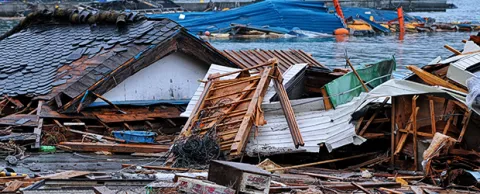
In most cities, the question of a natural disaster is not typically a question of “if,” it is a question of “when.” Since you can’t prevent it entirely, the best you can do is to try to mitigate it and help your community recover quickly.
The latter is about managing resources and this article from Onvia provides a few tips to help you do that effectively. From knowing where your resources are to being able to communicate instantly with responders, it all matters.
Of course, paying for it requires resources too, but you’ll see how a city and a county managed to build their networks through public-private partnerships. — Kevin Ebi
By Nick Schiffler, Onvia
Cities that implement streamlined and integrated processes are both best positioned to respond when disaster strikes, and to proactively determine when and where the next “big one” will occur.
On the west coast of the U.S., that big one is likely to be an earthquake. In response, the U.S. Geological Survey is partnering with major universities to develop an earthquake early warning system, doing this by investing in sensor networks and data processing systems that operate in real-time.
Cities with Geographic Information Systems (GIS) already in place can leverage the collected data to prepare for an earthquake – or other kinds of natural disaster. Cities that have implemented GIS can use that data to assess at-risk locations in relation to a city’s population and property value to determine where to allocate resources and where a priority disaster response is most likely to be needed.
New tools are constantly being created to detect disasters of all kinds. Several cities and counties are embracing emergency notification apps that alert citizens on their cell phones in case of a tornado or inclement weather. And a team at the University of the Philippines is developing an early warning system for detecting landslides that identifies unusual land movement with sensors and warns authorities via a cell network.
Even with the best detection technology though, disasters can still happen and can immobilize a city. When that happens, a rapid and comprehensive response is required.
One tool cities have for that purpose is the First Responder Network Authority, or FirstNet, which since 2012 has been operating and maintaining high-speed wireless networks dedicated to public safety. These networks help public agencies communicate clearly and effectively with first responders in the critical moments after a disaster strikes.
FirstNet approved a healthy budget of $6.585 billion for 2017, which should help more public safety agencies develop broadband networks to improve disaster response. Under FirstNet, government agencies like Adams County in Colorado (including the city of Denver) and the city of Elk River in Minnesota have forged partnerships with private companies to build out response networks.
By embracing new opportunities like FirstNet, and by leveraging systems they already have in place, cities can be best prepared to respond to disasters of any type and ensure the safety of their citizens.
Nick Schiffler is a business-to-government (B2G) market analyst and content marketer for business intelligence firm Onvia. Follow Onvia on Twitter and LinkedIn to stay up to date with the latest government market insights.
Smart Cities Council Readiness Challenge Grant
Would you like some help to make your city more resilient? The Smart Cities Council will award five American cities Readiness Challenge Grants to make better use of technology to better serve their citizens. It’s part of a White House commitment to help cities use technology more effectively. Start your application today.



